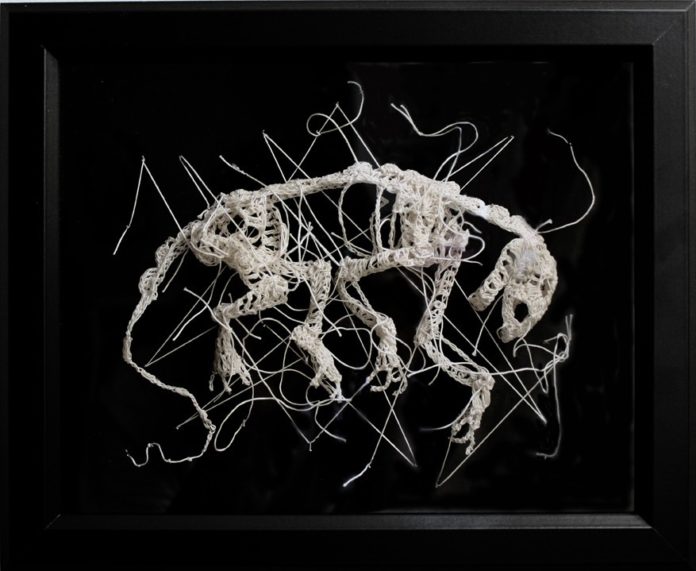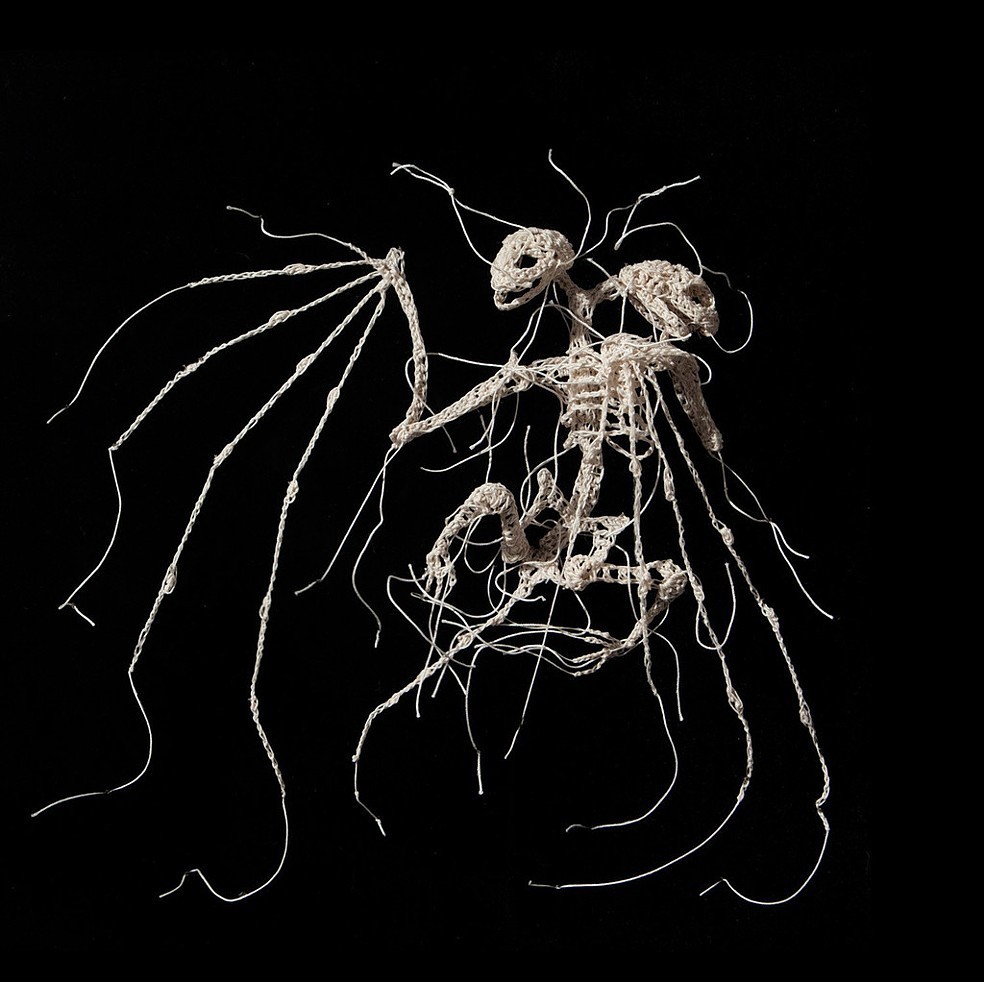Caitlin McCormack is an artist lives in South Philadelphia who sculpts animal skeletons with string and glue. While these eery sculptures may seem simply macabre, there’s more to these sculptures than what’s present: there are memories, there are empty spaces, there is a family legacy, and all the ways these things change and reconstruct themselves over time.
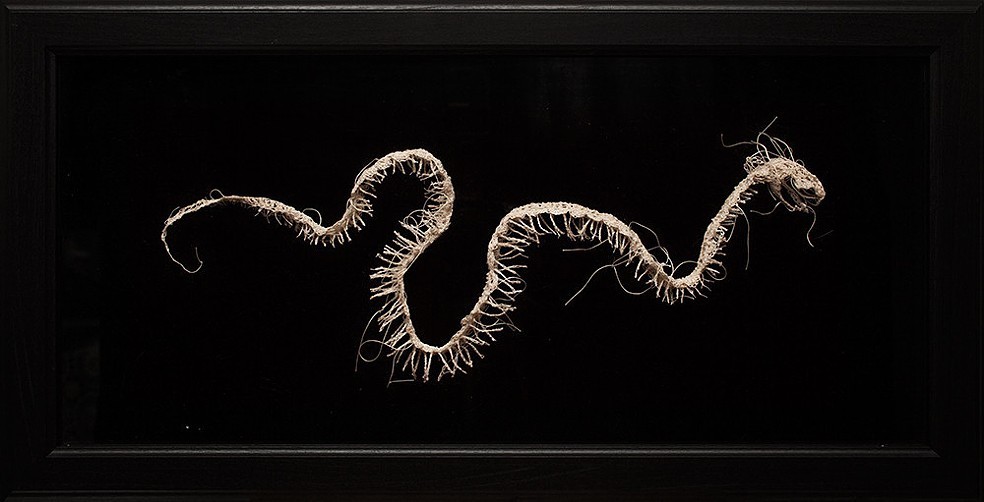
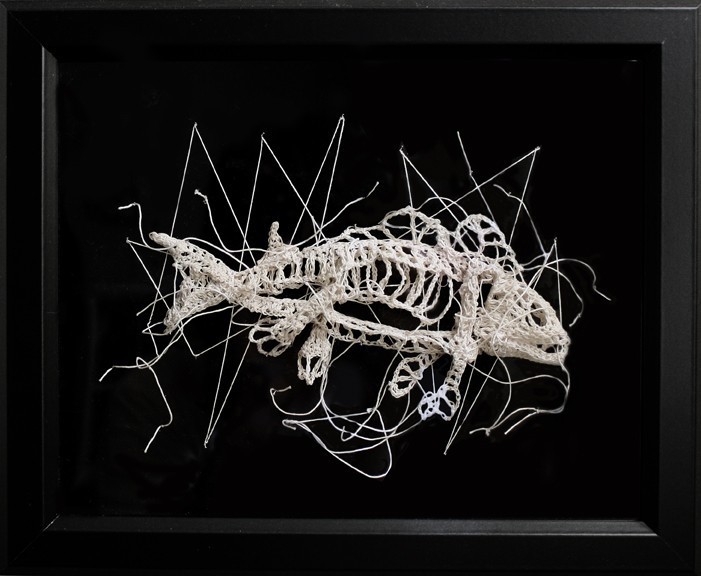
McCormick constructs her pieces using a labor-intensive process that involves stiffening discarded textile materials with enamel paint to create brittle bone-like material. She then crochets fantastical intertwined skeletons of humans, birds, snakes, devils, and two-headed bats, which are displayed with stark black backdrops, glass cases, and lathed bases that reference old-fashioned displays for scientific specimens.
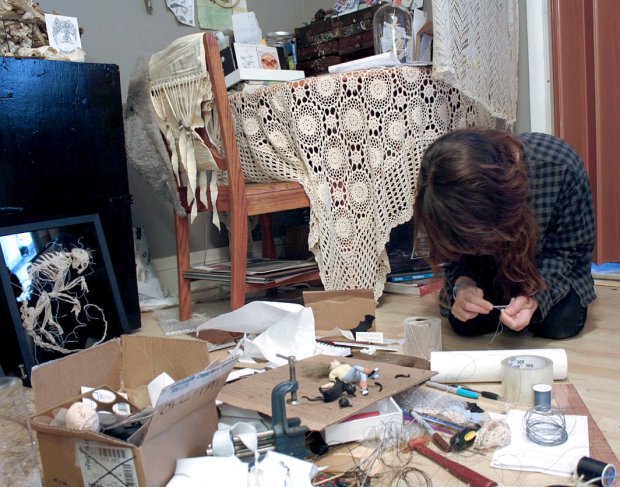
“I started working this way in 2010, after graduating from college, when my grandparents passed away. My grandmother was a very talented crocheter, and my grandfather was an exceptionally-skilled bird carver. Something about the receptive process of crocheting seemed to help me to cope with their absence. I eventually decided that it would be fitting to create a synthesis of their two crafts, by using my grandmother’s ancient, worn, and stained cotton string to construct what could be viewed as the fibrous innards of a carved, wooden bird.”– she said.
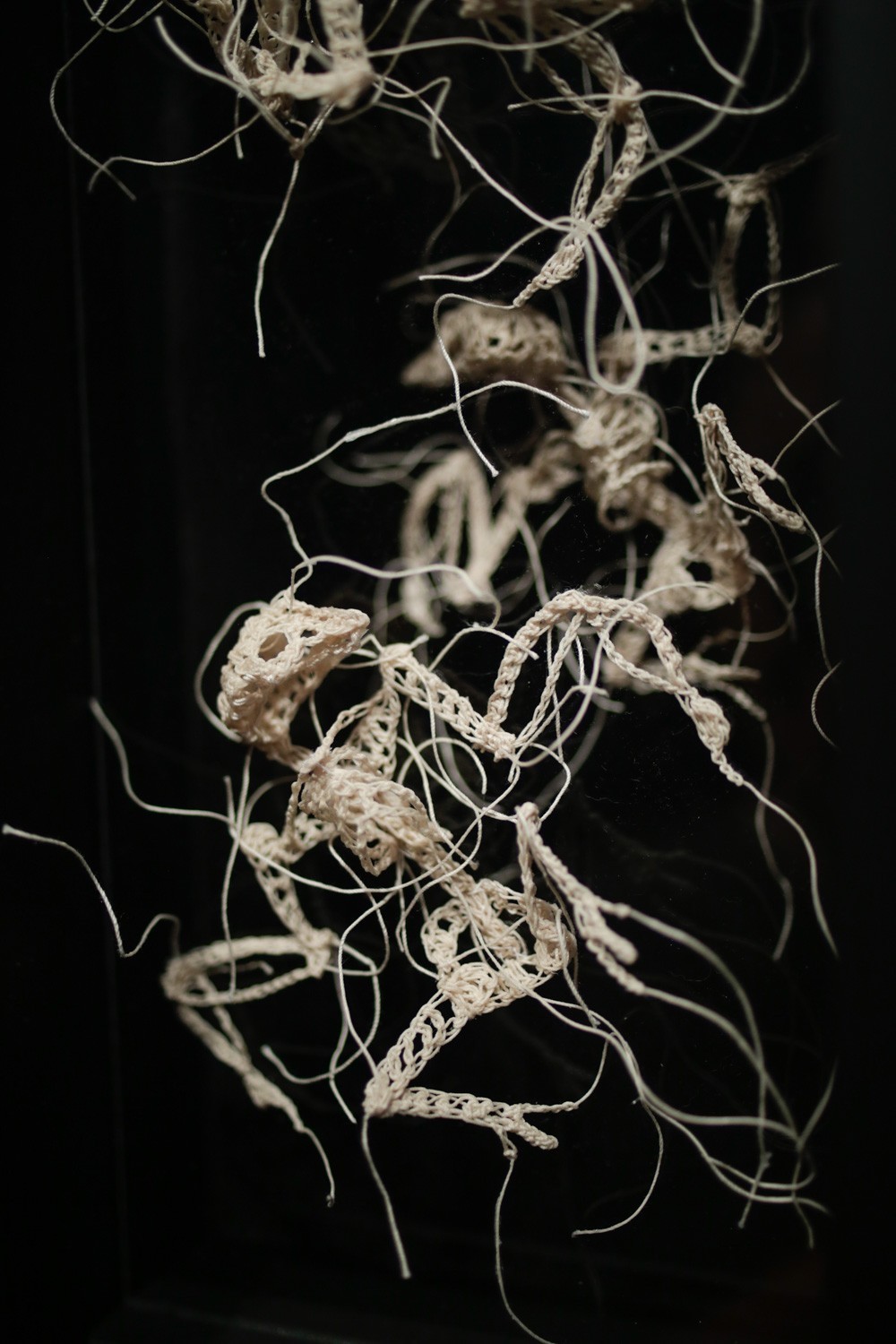
The forms of animals correlate with specific memories. Uses a tiny hook for crocheting each individual bone. This material is crushed in a mixture of glues, dries on a flat surface, is again unloaded, etc., until the desired level of hardness is achieved. Stitches the tiny pieces and stacks them, adds more glue and, eventually, ends with a skeleton, which is usually attached to black velvet, as a pattern. In all, there is always a lot of glue. Illustrations consist of pictures of tiny hand-made sets and dolls.
She says: “While I was in college, I enjoyed drawing and painting but felt the need to develop a more tactile way of producing imagery, since that’s always been my preferred way to work – to make things that at least start out as objects that can be touched, positioned, etc. Studying illustration definitely improved my ability to communicate ideas. Even though constructing sculptural work with more obscured meaning takes up more of my time than making 3-D illustrations with clear narrative do, the combination of a tactile practice and a desire to disclose very personal ideas is present.”






